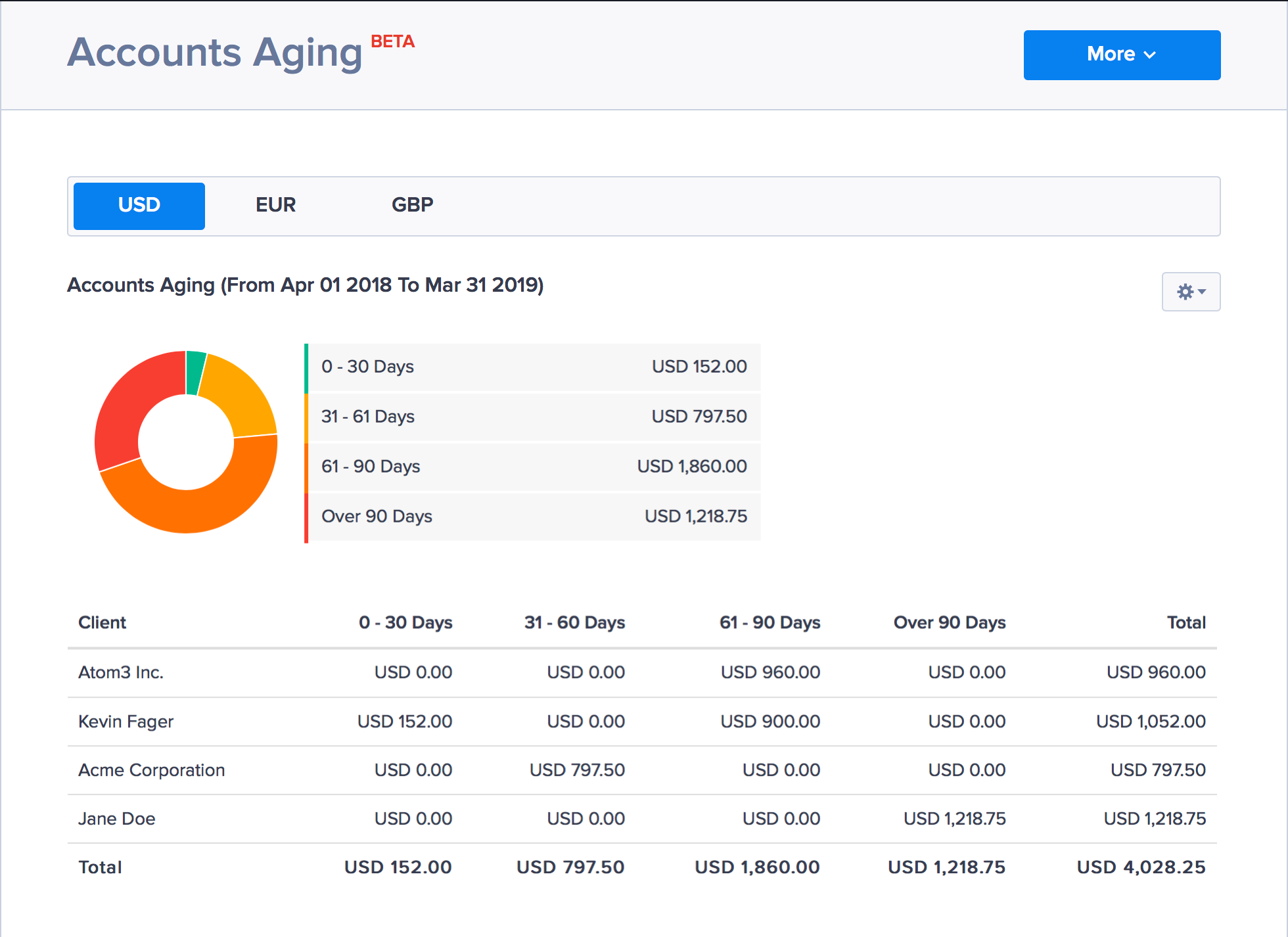How to Manage Aged Receivables
Getting your invoices paid promptly is good business sense, which is why there’s also a shift towards automation with cloud invoicing software. After all, money in the bank means the shutters stay up and provides you a base from which you can grow the company.
Considering this, managing your ‘aged receivables’ is a key part of handling your cash flow. It’s traditionally a hands-on process, involving time spent contacting clients and chasing up payments. Managing these invoices that are past due and reaching out to customers can be cumbersome—but vitally important for the financial wellbeing of your business. A solution such as Hiveage can help you streamline that process, letting you dedicate your resources to other, more productive, areas.

This post will look at aged receivables, and discuss why it’s important to keep on top of them. Finally, we’ll look at how to manage your aged receivables, and introduce Hiveage’s helpful functionality. Let’s get started!
A better way to manage your finances
With Hiveage you can send elegant invoices to your customers, accept online payments, and manage your team — all in one place.
What Aged Receivables Are (And Their Difference to Aged Debtors)
Your aged receivables is essentially a list of your current outstanding invoices from clients for delivered products and services. You may also see it referred to as ‘accounts receivable’.
Another way to think of this is that receivables is the direct opposite of ‘accounts payable’. While your customers will mark a transaction as accounts payable, you’ll mark it as accounts receivable (until it’s paid).
Your aged receivables are important to manage as they can be a key indicator of overall financial ‘health’ – both for you and your clients. You’ll often take a look at your aged receivables via accounts receivable aging reports, which offer a breakdown of your current debtor list arranged into monthly ‘chunks’.
At this point, let’s quickly clear something up to avoid confusion between a number of similar terms, most notably ‘aged debtors’ and ‘trade debtors’. While there are slight differences, these are sometimes used interchangeably. In a nutshell, we’re talking about outstanding debts that need to be paid to you, which we’ll discuss in more depth throughout this article.
Why You Should Keep On Top of Your Aged Receivables
It’s all well and good to know your current aged receivables, but having the motivation to manage them effectively is another matter. Obviously, you need to get paid for the products and services you provide, but there are several additional considerations beyond that.
As we mentioned earlier, analyzing reports on your aged receivables can help you develop your overall business strategy and approach. It’s worth reiterating that looking at your aged receivables can give you a quick summary of your business’ financial health, solely because the greater the receivables in relation to your income, the worse off you are.
However, you can also glean some quality insight into your customer’s financial standing too. For example, credit risk is something that can easily be assessed, based simply on the age of each receivable. If you’re seeing that a customer is a chronic late-payer, you can start reassessing the working relationship, which could positively impact your cash flow in the medium-term.
How to Manage Aged Receivables
How to manage your aged receivables will undoubtedly be based on your current debtor list and internal processes. However, it’s an easier process now than it ever has been, given the plethora of helpful advice and solutions available.
Before we get into solutions, it’s worth summing up some global best practices that can help you manage your list of receivables:
- Set reminders for chasing up outstanding payments, even if that’s a manual calendar entry.
- Following on from this, you’ll want to be prompt too. It’s important to begin your collection procedure at the same time every month, such as 14 days after invoicing.
- Use a professional, yet firm tone and voice (PDF) when dealing with your debtors.
Just to touch on this last point further, while you do want to show that you’re having to take an extra step in order to recoup income, you haven’t yet received that money. Treating customers poorly will not bring a resolution any quicker, and could even delay the process further.
The Accounts Receivable Aging Report
Of course, without solid and reliable reports, there’s little you can do to chase up debtors. That’s where Hiveage can help. For example, you’ll find the Accounts Aging report incredibly useful (and central) to your strategy:

An accounts receivable aging report provides a list of accounts receivable customers in a standard format – broken down into 30-day blocks. You’ll see a list of clients, and a monetary total for any outstanding amounts during the selected period. There’s also some handy visual charts to help see where your current debts are, at-a-glance.
If you’d like to get deeper into where your current outstanding amounts have gone, Hiveage also includes many other reports to help you. While they’re not all strictly receivable-related, they’re going to provide complementary information to give an overview of a current customer’s credit risk. Among these, the dedicated Accounts Receivable report will obviously be the most useful.
Conclusion
Regardless of what you call them, your aged receivables need to be reconciled. The amount ‘locked into’ unpaid invoices could be substantial if you ignore it, which puts pressure on other areas of your business to succeed in a greater capacity.
Of course, success should always be a goal, but shouldn’t be based on whether you have a clean slate as far as your debtor list goes. Fortunately, Hiveage includes great out-of-the-box functionality, such as its accounts receivable dashboard reports, and aging reports, meaning you can get back to what you do best – developing your business.
What problems to do face when managing your aged receivables? Let us know in the comments section below!
FAQs on Aged Receivables
What is an aged receivables report?
Accounts receivable aging is a periodic report that categorizes a company’s accounts receivable according to the length of time an invoice has been outstanding.
What are aged receivables and payables?
Your aged receivables is essentially a list of your unpaid customer invoices for delivered products and services. Aged payables are the opposite: these are the invoices you have received from vendors that are pending payment.
Is aged debtors same as aged receivables?
Yes, they are both the same.
Join thousands of business-savvy entrepreneurs on our mailing list.
Curated emails that’ll help you manage your finances better.




